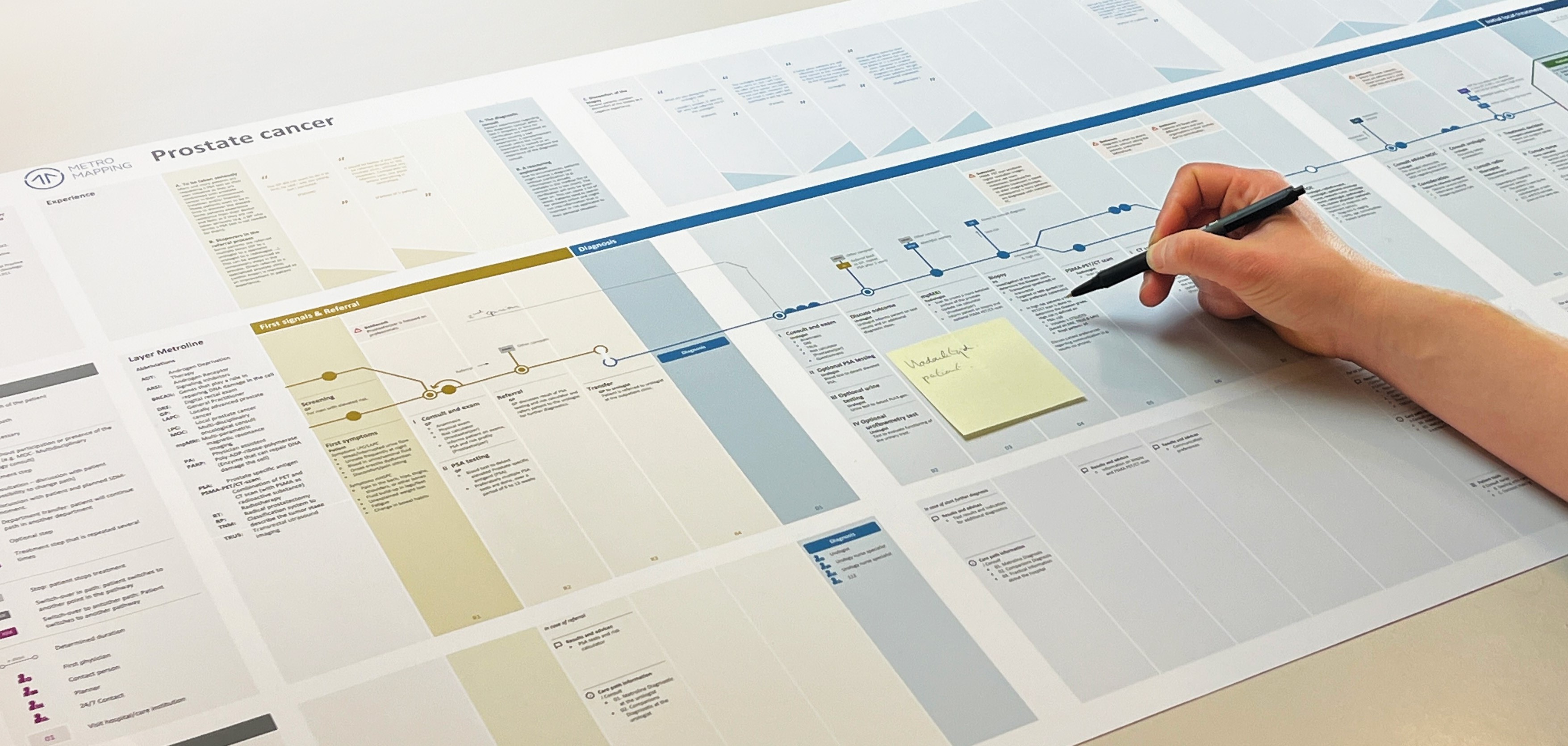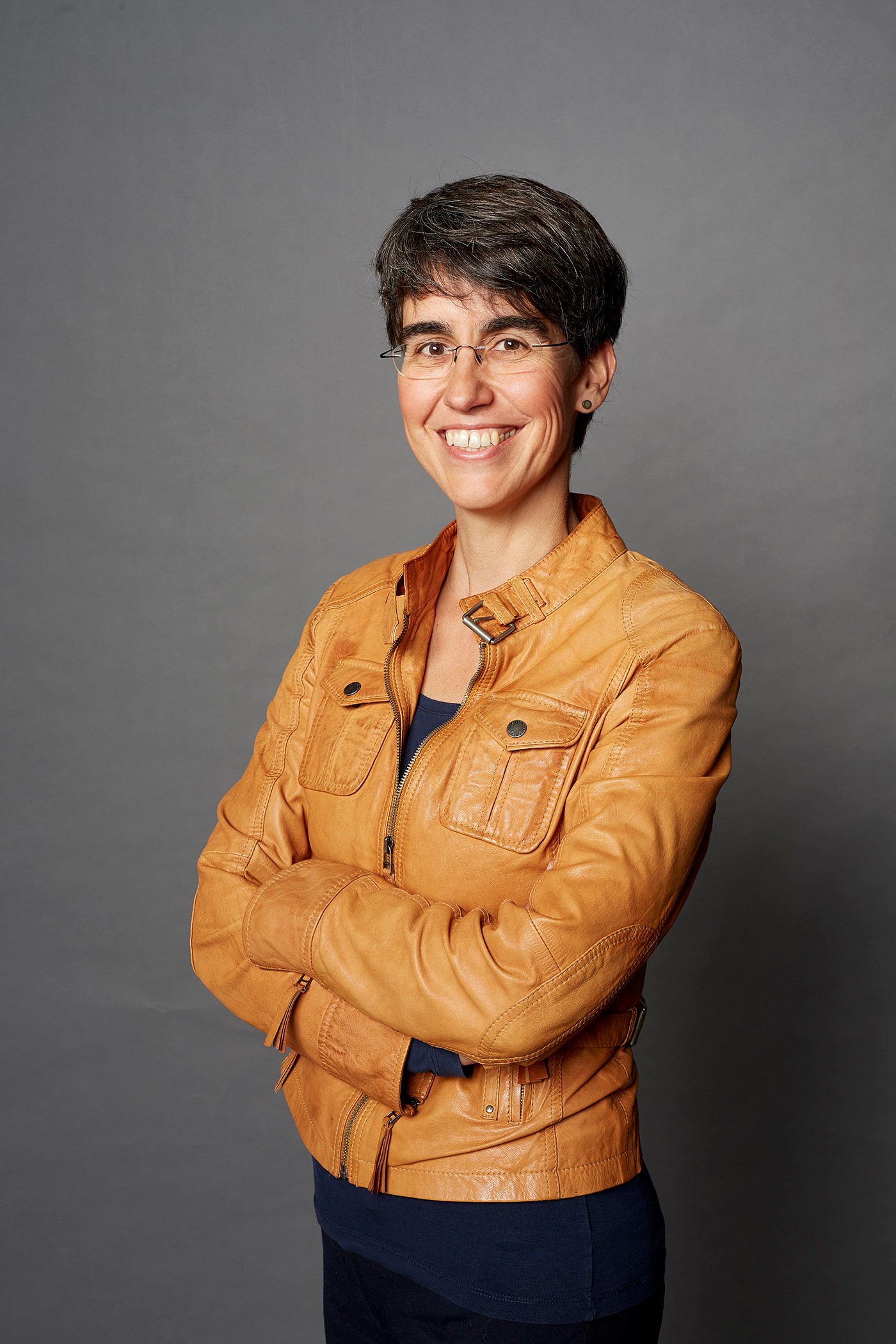Delft design method maps a route through the confusion for cancer patients
Cancer patients can often find it difficult to maintain a good overview of their situation. This is why Ingeborg Griffioen, a Delft industrial designer, developed the Metro Mapping design method for patients and care providers, to enable them to reach better shared decisions about treatment. The method is currently being tested and implemented in several hospitals. Experts in design engineering from TU Delft are now joining forces with medical professionals and researchers from Erasmus MC and the LUMC and the Panton design agency to further develop and apply Griffioen’s method in the Netherlands, Denmark and Spain.
In consultation with their doctors, cancer patients have to make important decisions about their medical treatment. They often have to make complex choices involving survival, the risks of treatments and quality of life. However, it can prove difficult to make well-considered decisions in practice. Patients may find that they are lacking essential information, have insufficient insight into the course of their treatment or face complex procedures and confusion about who is in control, such as the oncologist, surgeon or the GP.
Metro line as a metaphor
In order to improve this situation and actually achieve shared decision-making between patient and clinicians, Ingeborg Griffioen developed the Metro Mapping method. She worked in collaboration with her Delft colleagues Dirk Snelders and Marijke Melles, together with Anne Stiggelbout from the LUMC. The project was co-funded by the KWF. Griffioen herself, who graduated as an Industrial Design Engineer at TU Delft, died last year after suffering cancer. Griffin approached shared decision-making uniquely, namely as a "service" that can be improved. Griffioen used a metro line as a metaphor for providing an understandable overview of the cancer treatment pathways. Rather than seeing it as a journey with a single train, in her view it comprises several journeys with multiple changes, involving new care teams and new decisions. In order for a patient to participate in decision-making, he must have a continuous overview. This leaves more room for good collaborative decision-making in treatment.
Prof. Judith Rietjens (TU Delft & Erasmus MC), PI 4D PICTURE:
“People with cancer and their loved ones often have to make complex decisions about their care and treatment. Many people are eager to become involved in the decision-making process, but are overwhelmed by their emotions about the situation, the complicated and often conflicting information they receive and the lack of clarity about what to expect. In our 4D PICTURE project, we hope to support cancer patients and their loved ones and care providers in these complex decision-making processes by identifying a clear care pathway and developing decision aids and offering them in a way that reflects what people really need. It’s a great honour to be able to spread Ingeborg Griffioen’s legacy across Europe by doing this.”.
What is Metro Mapping?
With colleagues, Griffioen analysed her own diary and spoke to patients, loved ones and care providers. According to her, there are various different themes at play. One of these is the information deficit. This can be optimised, for example by always presenting information in the same way. Another important theme is the ambiguity concerning the division of roles between patients, their loved ones and the various care providers involved. This needs to be made clearer, not only based on the organisational structure, but also based on the patient’s needs. Finally, there is the physical context: to what extent do products and environments match the specific care needs at that time? In other words, the examination rooms, but also the car park, the waiting room and everything you encounter, need to actively support the patient.
Further developed in practice
Metro Mapping makes it possible to chart the entire care pathway, including all of these themes. It is precisely by establishing these connections in a central overview, the Metro Map, that it is possible to have a conversation about where improvements need to be made. Metro Mapping is already being tested in several Dutch hospitals. The European research project 4D PICTURE, coordinated by Judith Rietjens, Ida Korfage and Anne Stiggelbout, also recently received €10 million in funding from Horizon Europe to further develop the concept in collaboration with scientists, care providers and patients from nine European countries. As part of this consortium, TU Delft researchers Judith Rietjens and Dirk Snelders are collaborating with Erasmus MC and the LUMC, as well as Panton, a design agency specialising in care. They will be joining forces to further develop and apply Griffioen’s methodology in the Netherlands, Denmark and Spain. Their work will involve developing decision aids and conversation guides for people with breast cancer, prostate cancer and melanoma.
Free for healthcare
Design agency Panton, founded by Griffioen in 2005, plans to offer the Metro Mapping toolbox currently under development free of charge to healthcare. The first draft manual, currently being compiled, will be available for hospitals to download free of charge. It already incorporates the initial lessons learned from Erasmus MC, LUMC and RadboudUMC. Although mainly being applied in oncology, the method also appears suitable for transgender, dementia and maternity care.
Contact for media questions:
Fien Bosman, TU Delft Health & Care media relations officer: f.j.bosman@tudelft.nl / 06-24953733
Further information about the Metro Mapping methodology
Read more about the 4D PICTURE consortium
Panton, we design healthcare
See also:
Better prepared for big decisions in healthcare (tudelft.nl)
shared decision making; patients (kwf.nl, in Dutch only)
Zo helpt Metro Mapping bij samen beslissen (How Metro Mapping helps in shared decision-making, qruxx.com, in Dutch only)


